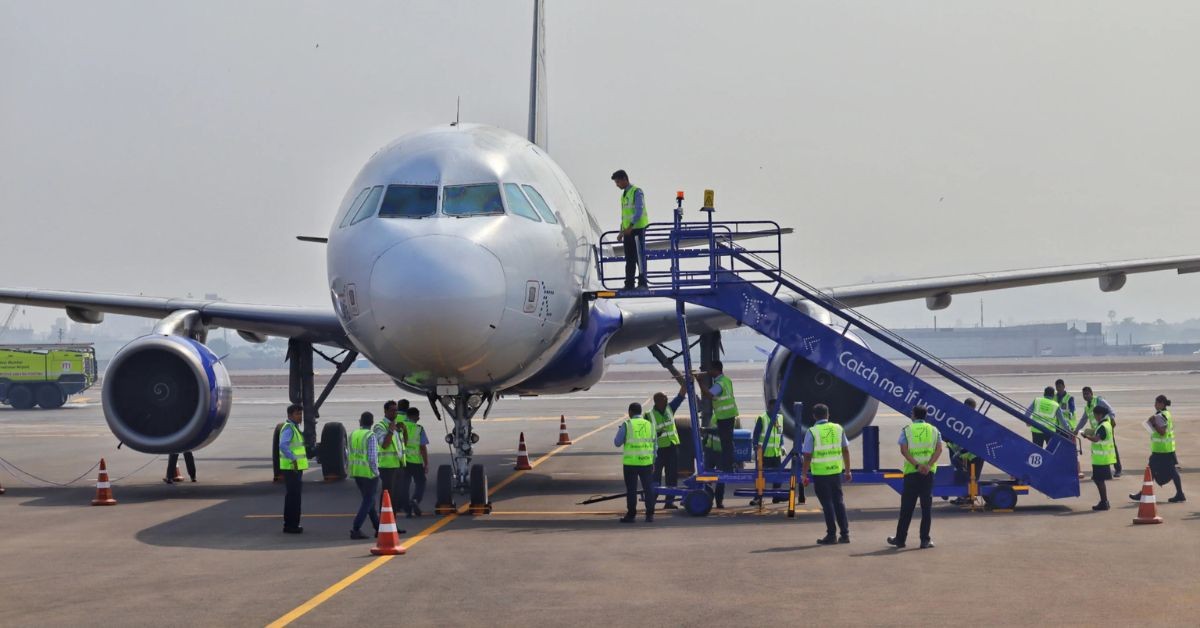Navi Mumbai International Airport (NMIA), the second airport for the Mumbai Metropolitan Region, is preparing for its inauguration on September 30, with a strong focus on advanced cargo facilities designed to transform Maharashtra into a logistics hub of national importance. While passenger convenience remains central, NMIA’s state-of-the-art air freight infrastructure is expected to deliver a major boost to India’s trade competitiveness.
Phased cargo expansion
Built as a greenfield project, NMIA is developing its cargo capabilities in multiple phases. The first phase will include a fully integrated cargo terminal with an annual handling capacity of 0.5 million tonnes. Over the next 10–12 years, the facility will be expanded in successive phases, reaching a planned capacity of 3.25 million tonnes by the end of phase five.
At full build-out, NMIA will operate two parallel runways. Only one will be active at launch, with the second slated for later construction, enabling simultaneous operations in the long term.
Strategic location near JNPT
A key advantage for NMIA lies in its proximity to Jawaharlal Nehru Port Trust (JNPT), India’s busiest container gateway, which is projected to cross 10 million TEUs by 2027 and rank among the world’s top ports. The close linkage between JNPT and NMIA opens the door for seamless sea-air transshipment, particularly for high-value and time-sensitive cargo.
This will allow containers arriving at JNPT to be cleared and airlifted within hours to destinations in Europe, North America, and Asia. Together, the port and airport will offer a full spectrum of cargo solutions, from bulk containerized shipments to urgent express freight.
Multimodal connectivity
NMIA has been designed as a multimodal hub, ensuring rapid movement of goods and people. The airport is directly connected to expressways, highways, arterial roads, metro systems, suburban rail, high-speed rail, and even inland waterways. Industrial and logistics clusters across Alibag, JNPT, Panvel, Nerul, and Thane will be reachable within 1.5 hours, while distant hubs such as Bhiwandi can be accessed in around 2.5 hours.
Integrated free trade and warehousing zones, backed by dedicated freight corridors, will further streamline customs clearance and re-exports, offering significant efficiency gains for importers and exporters.
Cargo infrastructure highlights
The first phase of NMIA Cargo will span approximately 35,000 square metres, with 10,000 square metres set aside for domestic operations and the remainder for international cargo. The facility includes:
- Dedicated international, domestic, and courier/express cargo terminals
- 11 freighter stands, of which seven are ready at launch, with the rest to follow in the next phase
- Compatibility with both Code D aircraft (such as Boeing 767F) and larger Code F aircraft (such as Airbus A380 and Boeing 747-8F)
Cargo operations will commence with domestic services, followed by international freight handling in the subsequent months.
Advanced technology and sector-specific hubs
The airport’s cargo operations will incorporate automation and digital innovation to set new benchmarks in speed and reliability. Key features include:
- Automated storage and retrieval systems
- AI-enabled monitoring and robotic sorting to reduce turnaround times by up to 40%
- Real-time tracking platforms for transparency and reliability
- Paperless processes using blockchain-based digital customs clearance
Specialized facilities are also planned to cater to sensitive sectors:
- Perishables Cargo Village with farm-to-flight cold chain corridors for grapes, mangoes, onions, cut flowers, and other agricultural exports
- Pharma Excellence Centre with GDP-compliant, temperature-controlled zones for life sciences and pharmaceutical shipments
- Drone and express cargo zone, designed to support the fast-growing e-commerce and drone logistics sectors
Complementary role with CSMIA
While Chhatrapati Shivaji Maharaj International Airport (CSMIA) already manages significant air cargo volumes, NMIA is expected to complement—not replace—the existing hub. Both airports will operate in parallel, jointly positioning Mumbai as a dual-airport cargo ecosystem capable of handling exponential trade growth in the coming decades.
By combining multimodal connectivity, advanced technology, and proximity to India’s busiest port, NMIA is set to establish itself as a game-changer in the country’s logistics and air freight landscape.









